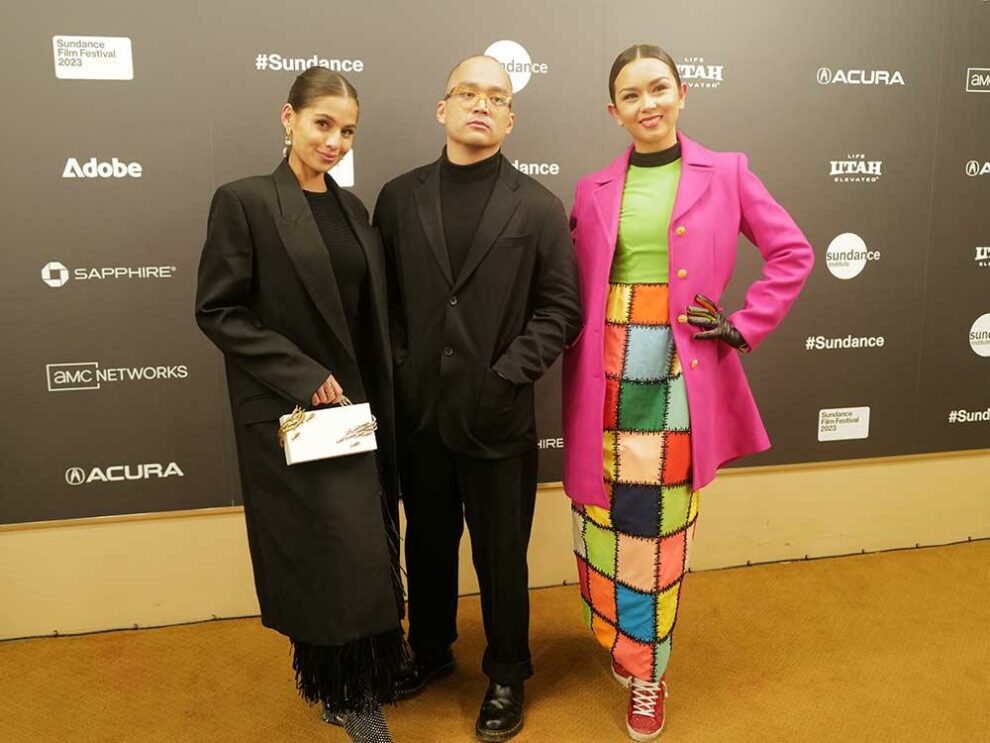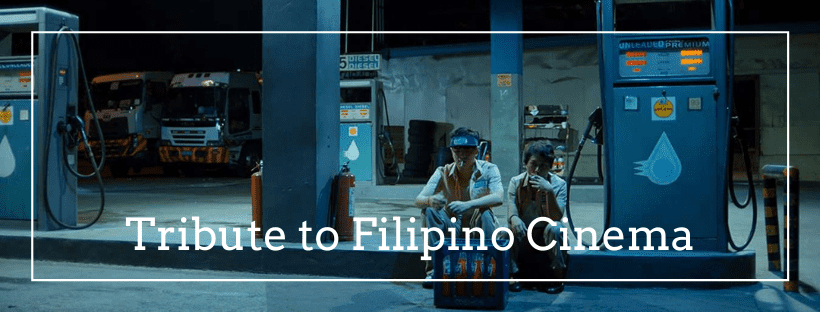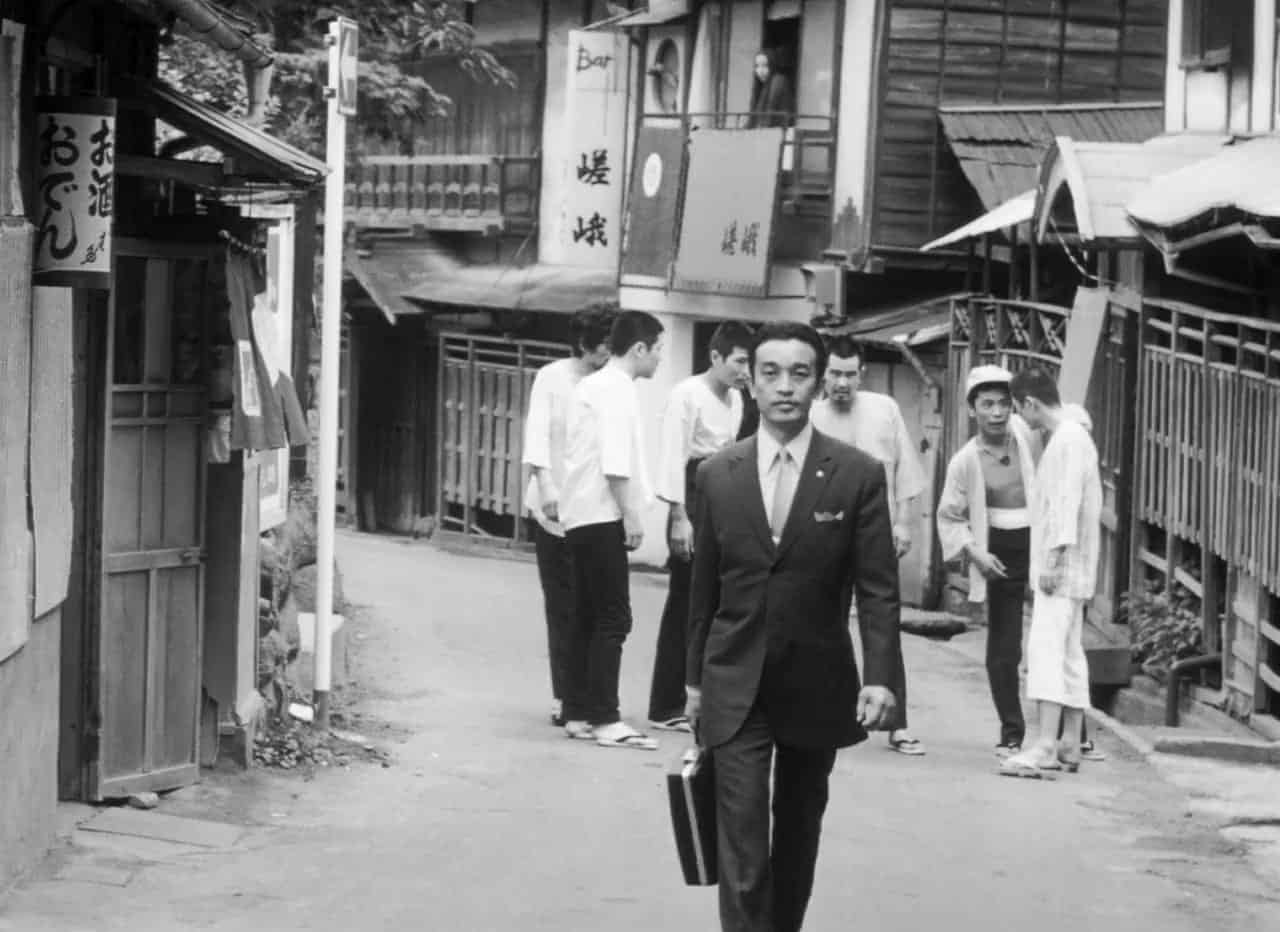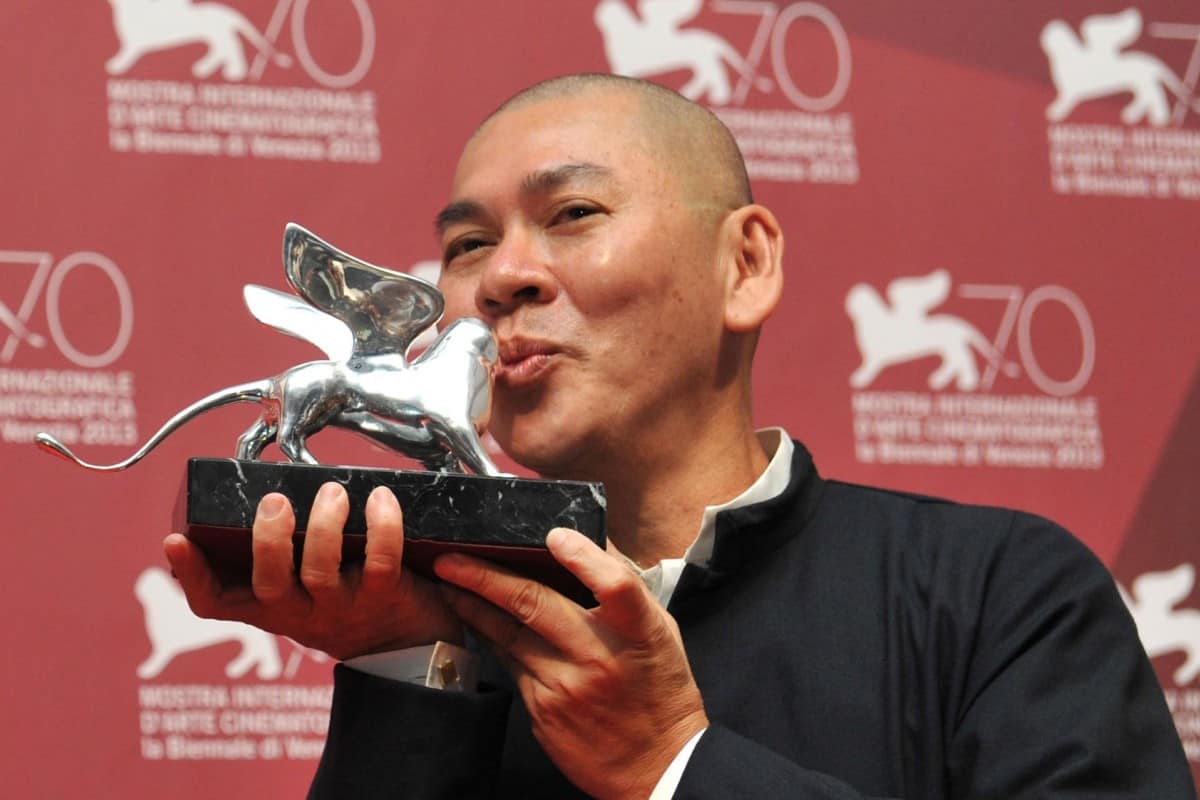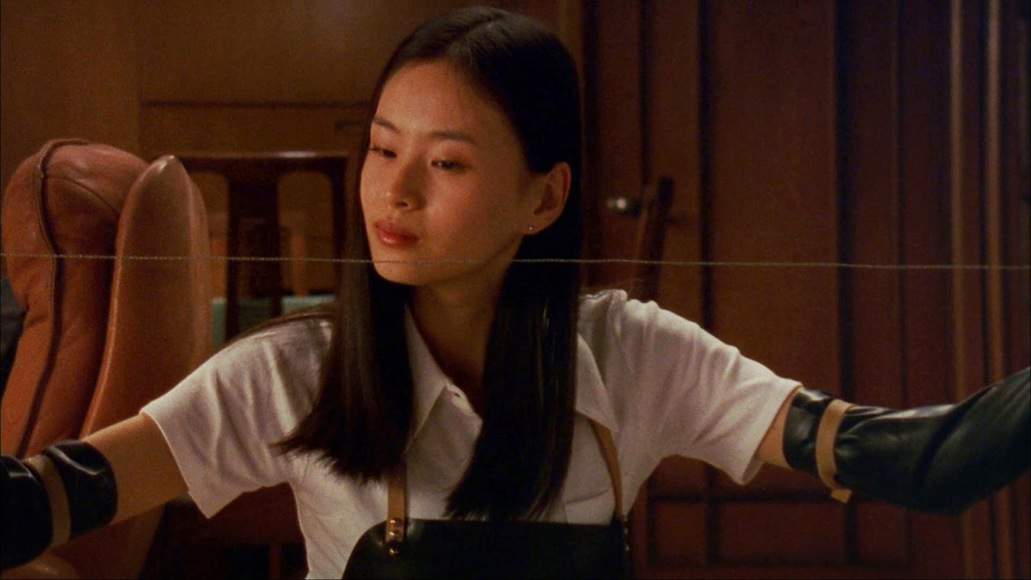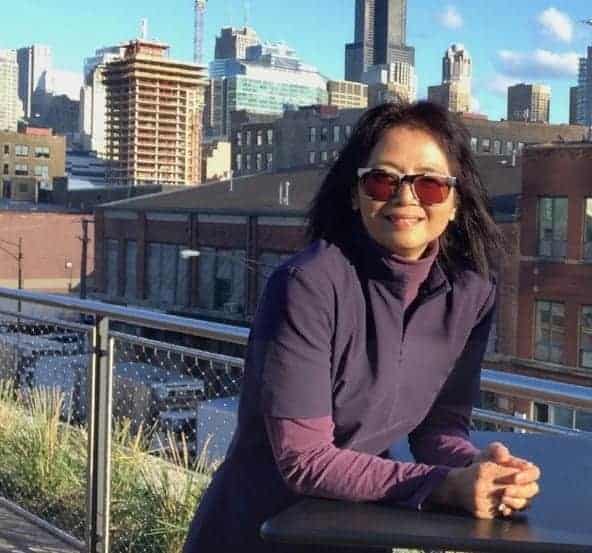Midnight screenings are usually exciting affairs, and Filipino World War II-era fantasy-horror flick “In My Mother's Skin” was no exception. Kenneth Dagatan's sophomore feature kept late-night audiences awake during its world premiere at Sundance. In this movie, two children — the brave Tala (played by the charismatic Felicity Kyle Napuli) and her more timid younger brother, Bayani — find that their bourgeois family home at the brink of ruin. Their father has disappeared to barter with the Japanese; their mother has fallen ill; and, on top of all of this, once-trusted family friends knock at their door for gold. Out of desperation, Tala begs a mysterious wood fairy (Jasmine Curtis-Smith) for help. She receives a magical insect that certainly changes her mother's health — but not necessarily for the better.
Rich with folklore, period detail, and of course, gore, “In My Mother's Skin”‘s appeal has reached far and wide. In addition to its Sundance selection, the film wrapped up its European premiere at IFFR in January, and had its world distribution rights picked up by Amazon Prime Video. Now, we return to a conversation we were able to have at Sundance with director Kenneth Dagatan and Jasmine Curtis-Smith. Their personae remarkably departed from the movie's cold-blooded tone. They elbow each other with warm banter; they jovially jumped to answer each other's questions. In what ended up being one of the more entertaining conversations from the festival, we spoke about ghosts from the past, haunts on set, and the future of Southeast Asian horror.

This interview has been edited and redacted for clarity.
Kenneth, you mentioned in the premiere Q&A that “In My Mother's Skin” started out as a short film. How did you expand the idea from there?
Kenneth Dagatan: In 2018, I pitched like, 10 concepts to a studio. They didn't like any of them. Then my friend in the studio asked me if I had another concept. I told her that I do, but it's a short film from 2015. And then she said, “Oh my God, you should make this into a feature film!” So I did. (laughs)
You mentioned in the Q&A that your other films share similar themes, like motherhood, children, and thrillers.
KD: Maybe I'm just too lazy, so I keep recycling them.
Jasmine Curtis-Smith: You mean you keep revising them!
KD: (laughs) But yes, I wrote these three films separately, and they all keep going back to this sense of motherhood and the loss of innocence. It might be subconscious. Now, I need to figure out what's next.
If these themes called you to the film, Kenneth, then Jasmine: what drew you to the role of the flesh-eating fairy?
JCS: I was very lucky because I received not just the full script, but the dossier as well. When I got to read [Kenneth's] background, inspiration, and the core of the story, I was so drawn in. We don't really explore period films — especially period films in a different genre, ones that don't just focus on history. I was also drawn to portraying a non-human character. The fairy does not care about [human relations and emotions]; all she cares about is her mission. So I wanted to dissect that. At the same time, I wanted to work with this creative team, [the people behind] the costumes and the set design. It was a no-brainer for me.

This fairy figure is not human, but she's still anthropocentric. She reminded me of these human-esque, wish-granting fairies in “Cinderella” or “Pinocchio”, but Jasmine's fairy is — different.
KD: Because the film happened in WWII, with Japanese and Americans going in [to the Philippines], having this Western fairytale adds another layer to [the film], like colonization.
JCS: Since the story mainly follows Tala and Bayani, the fairytale aspect allows us to make it look as if we are looking at the world from their eyes, with hope and longing in the midst of war. It's a great way to explore Filipino folklore and mythologies mixed with religion.
That's right, religion plays a huge part in the movie.
JCS: It was interesting for me to see how much [the film] showed the Roman Catholic imagery, through statues of Mary, my costume, the act of praying in Spanish. [The language] brings so out so much flavor and texture to feelings of alienation from your home country.
KD: It's like searching for your own identity.
JCS: Yeah. We don't spend our nights kneeling and praying for two hours as they would have back then. People really clung on to hope through religious faith.
KD: Each character is searching for hope. Tala is searching for hope through her mother; through waiting for her father to come back; and the like. The Catholic motif makes one wonder, “Is hope actually a dangerous thing to feel?” The whole film is about searching for hope.
“In My Mother's Skin” searches for hope like a fairytale, but it's also a horror film, like a ghost story.
JCS: We were having a conversation before the premiere that it's also a political film. We didn't see that when filming. I didn't see it that way when I was reading it. We're just so used to having the three cultures [Japanese, American, and Filipino] and speaking about it, but it doesn't feel political for us. But that's also part of the horror for Tala's family — [the ghosts of the colonial history] envelopes them in their own home. You're constantly reminded of how much fear the country went through. The fear of the family represents the Filipinos' fear.
There's this moment when Bayani asks, “What are we? Who are we siding with? Why?” And I think that really is such a difficult thing to process at such a young age. Our two child actors really interpreted the truth of each line.
KD: That's why I really love the horror genre. You have the opportunity to tell real lived horrors through fairytale, mythology, new layers — you can retell something that's beyond our control.
What was it like to work with minors on a horror set?
KD: When Felicity auditioned for Tala, she told me, “Oh, you have this symbolism [in the movie].”
JSC: She's only 15!
KD: She noticed, “You're setting this up for this payoff.” I was amazed that she's so aware of the story, of her character, of where [Tala] is going.
JSC: [Felicity] has a commanding presence on-screen and on-set. One time, I was sitting down watching her perform her scene where she was begging for everything to stop. As I watched her, she made eye contact with me, [as if] commanding me to come closer. So I stood up, drawn to her.
KD: She's so professional. When she's done her scene, she just goes back to her normal self.
JSC: I suppose we could attribute it to her theater background, but her maturity!
KD: This is her first feature.
JSC: It's really so impressive.
KD: She was giving me notes. (laughs)
Did either of you two feel haunted during production?
KD: No. But I wrote the film!
JSC: No, but there is this one story about the house. The set is a heritage house in Bacolod, in the middle of the Philippines. It was used for “Oro, Plata, Mata” by Paque Gallaga [from 1982], and that house has remained the same [since].
KD: The chapel was made by the family. Beautifully maintained.
JSC: Yeah, and there's this one time when we were on set filming Tala in the corner. While they were setting that up, I was told that the owner was there at the moment, and he doesn't mind the noise. But some of us were exchanging ghost stories earlier, and then we suddenly heard a splash of water.
KD: He was taking a bath!
JSC: I didn't know! It was 2am! It freaked me out! So that's probably the closest I got to feeling spooked.
KD: I did watch “Oro, Plata, Mata” several times to get a feel for the house and its floorplan. I asked my producers if we could check it out [before confirming the location]. When we saw the house from afar, I was listening to my horror writing playlist. So when we arrived [at the door], I knew we had to get this house.
The house plays a big role, but so does nature — especially cicadas.
KD: My production designers, Benjamin Padero and Carlo Tabije, suggested the cicadas because of this beautiful process of rebirth. They stay underground and then transform when they surface. The sound of the cicada too – it sounds like laughing. It's similar to Tala and her hope.
And what was it like to get into the cicada-inspired costume?
JSC: I absolutely loved it. Ben and Carlo told me that, on the fourth or fifth shooting day, that after they put on the last layers of my headdress, my face would transform into this certain look and level of calm. I felt that I was embodying the physical manifestation of this cicada.
How many layers were there?
JSC: Four. There's the petticoat and then two layers of different fabrics – one velvety, one sheer. Then the wing skirt. The tops were separate; that was only two layers. With the headset, it weighed around two kilos. But it didn't feel like it!
KD: Each time I said “Cut!,” a group of crew members would rush towards her.
JSC: They were always so worried. They wanted to make sure I wasn't sweating, that I was okay [with the weight].
KD: It was so hot. At some point I was shirtless.
The production design added so much to the film. I could really sense the different textures from the dress, the house, the light.
KD: Props to my cinematographer, Russell Morton.
It was the softest horror movie I had ever seen.
KD: Russell, Ben, Carlo, and I had these meetings where we'd ask, “What fabric do we need? What should we use?” Russell was picky about how he lights his fabric and the headdress.
JSC: In a conversation [I had] with Russell, he said that he wanted the film to look like a painting.
KD: The original plan was to make this film as realistic, gritty, and grounded as possible. But when I saw the product on set, I that we were really telling a fairytale because of the lighting.
Like the altar of Madonna.
KD: Yeah, exactly.
Finally, since we're out of time: What are your two's thoughts on the Southeast Asian horror scene nowadays?
KD: It's really booming.
JSC: I just hope it keeps getting bigger and bigger. Hollywood is missing out in the horror genre. We are really creating some of the most powerful and intriguing ones.
KD: Being here at Sundance is a bit surreal for us. I think this will open a lot of doors for Southeast Asian filmmakers.
JSC: That and the fact that we got to share a bit of Filipino folklore and mythology. I think it's an opportunity for a Western audience to see and understand it in another language than how we tell it in the Philippines. I think it's difficult sometimes to bridge the gap between Hollywood and Southeast Asia; we need to meet each other halfway to deliver a certain language of film, even if it's not totally the original story.
KD: And getting to share personal elements as well. The fairy costume was based on the Baby Jesus in my hometown. The gun, the gold – it's all inspired by my grandfather telling me stories when I was younger. It's true to heart.
Worldwide distribution rights for “In My Mother's Skin” are managed by Amazon Prime Video.


